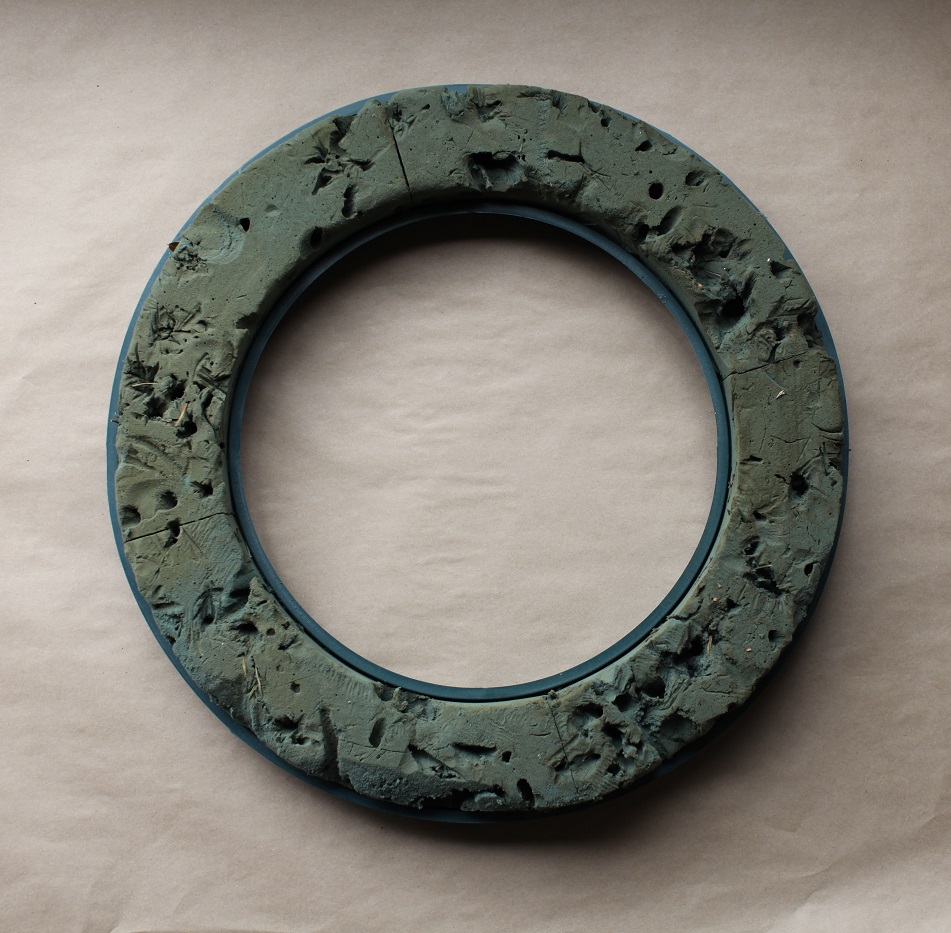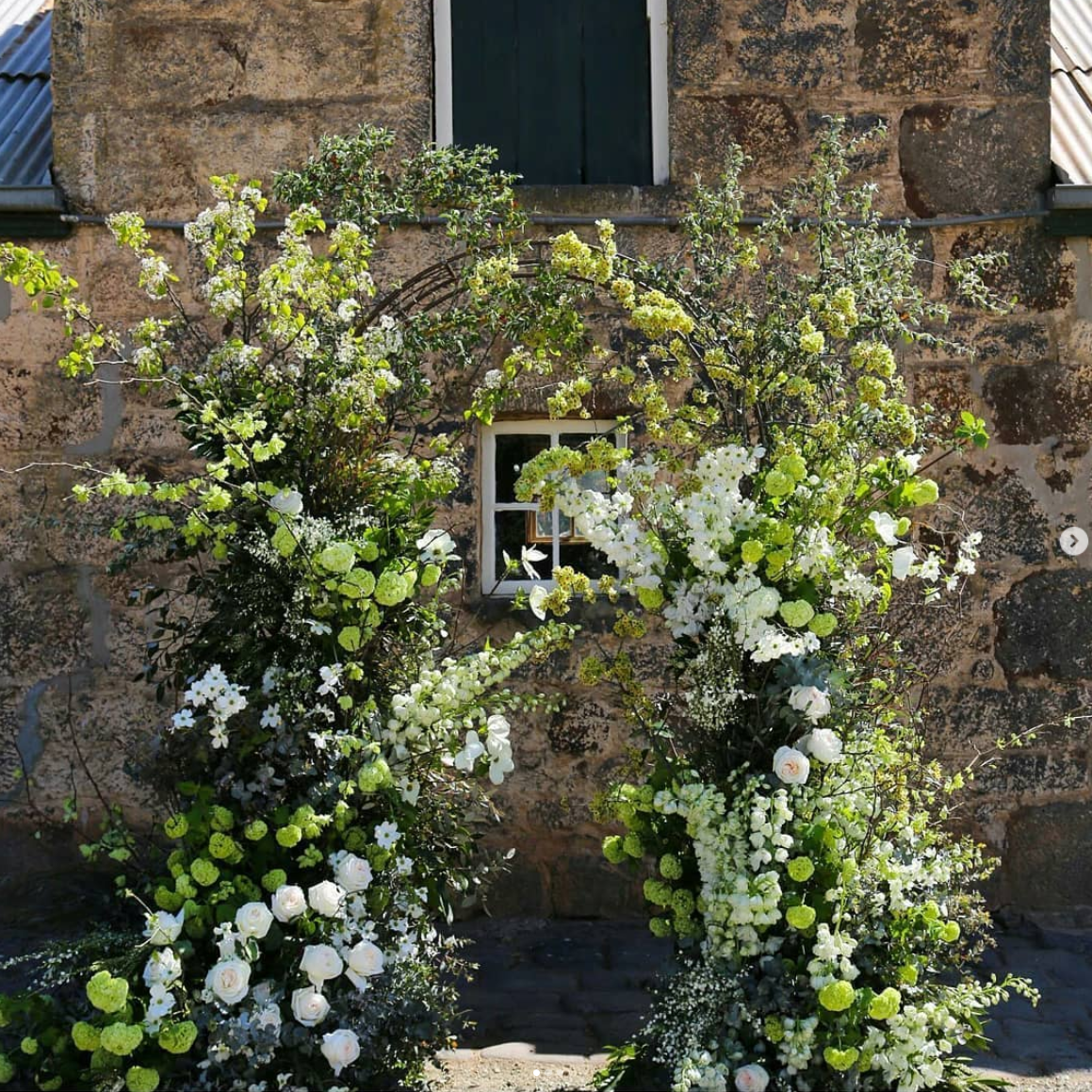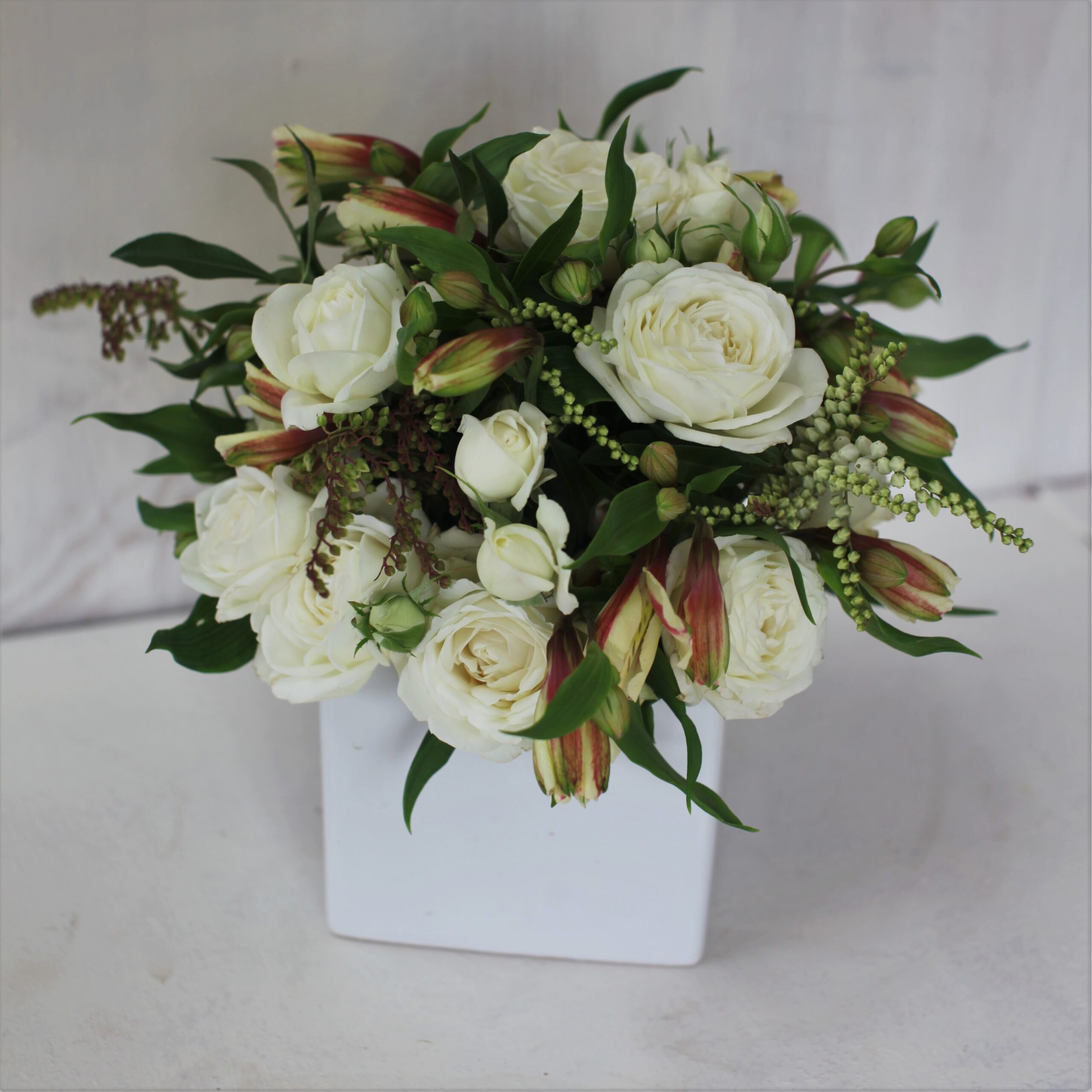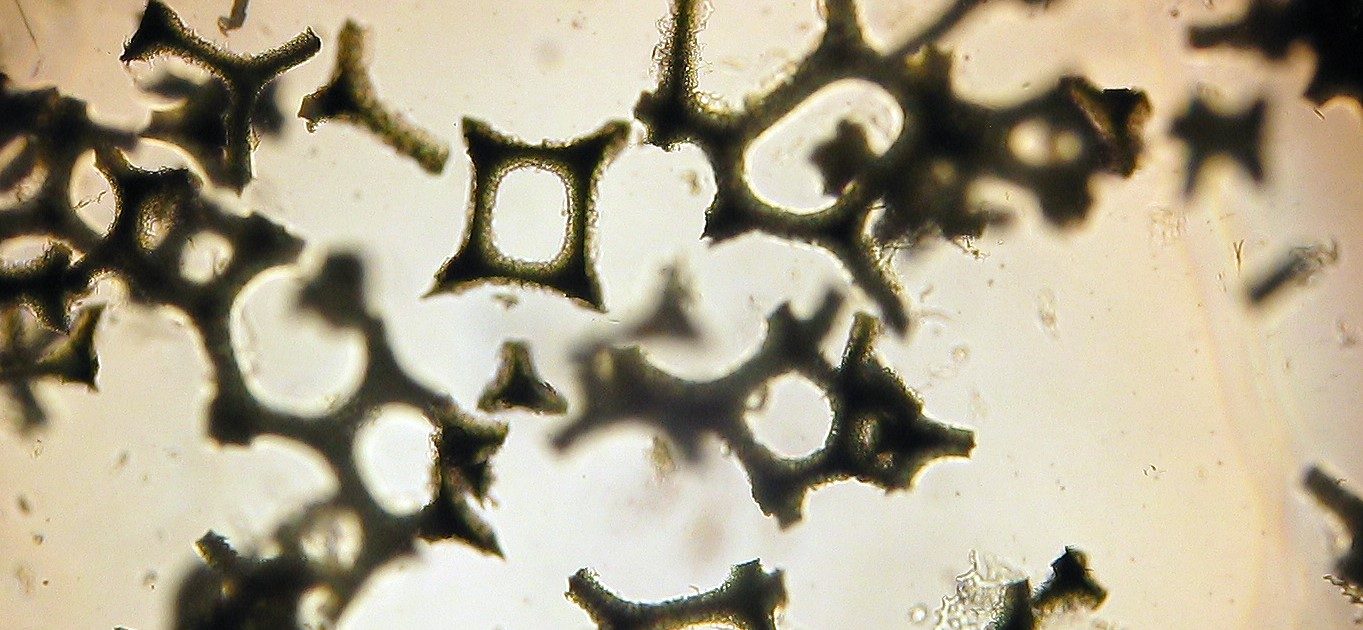
#NoFloralFoam
The #NoFloralFoam movement has been the most disruptive development in the world of floral design in the past 60 years. Of course, the most revolutionary development before that happened in the late 1950s – the invention of floral foam.
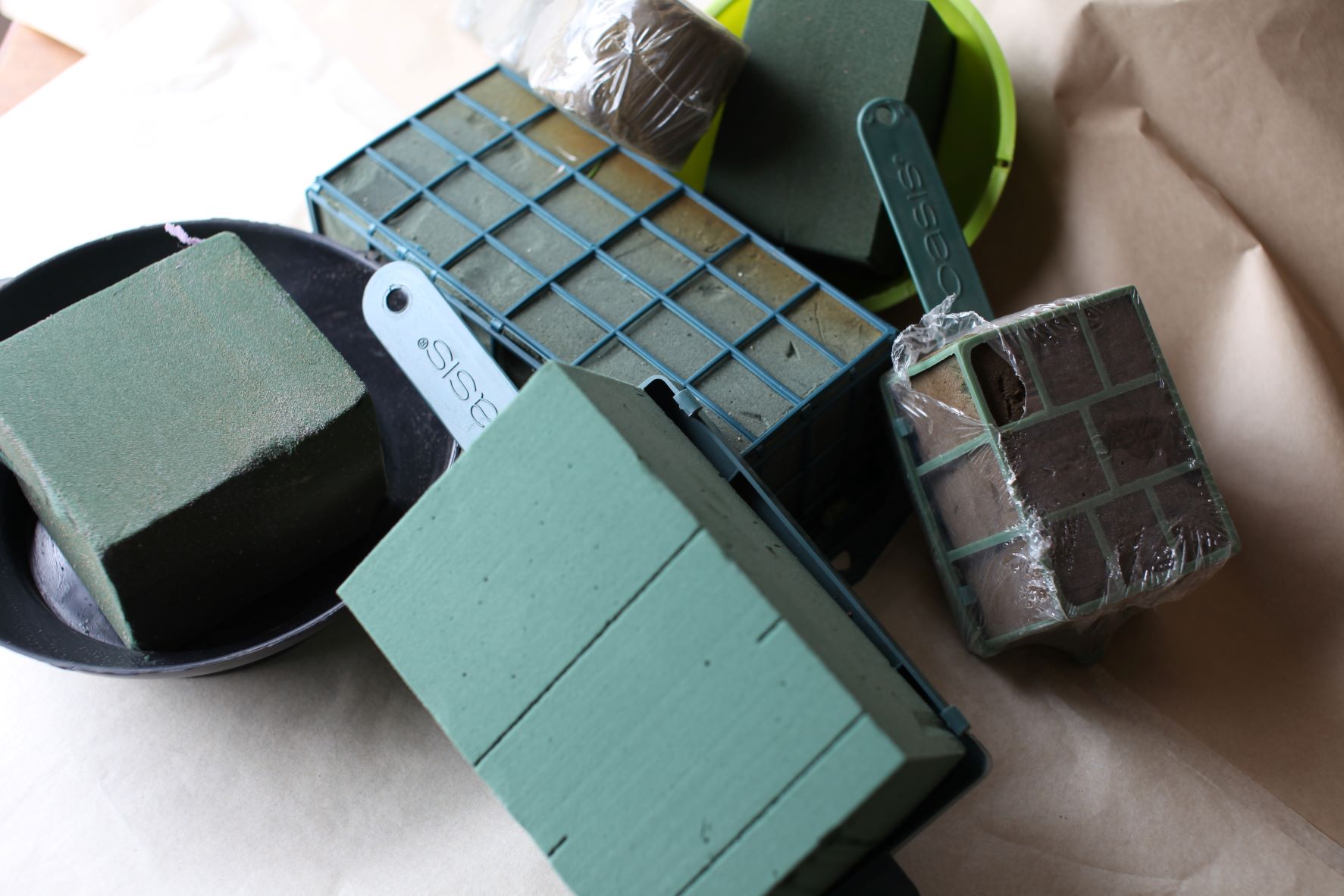
Floral foam is at the base of flower arrangements all over the world.
The problem
Florists and hobbyists use floral foam as a base medium for design. It’s an extremely convenient product that floral designers use to stabilise their arrangements.
Unfortunately, floral foam is a single use plastic. It is impossible to recycle. Because it is used with water, it frequently ends up in the water waste stream and quickly breaks down into microplastics. A recent study has shown that it harms aquatic animals. Depending on where it lands, it can hang around for hundreds or even thousands of years. In short, it is just more harmful waste adding to the world’s plastic crisis.
The problem is that even though we now know floral foam is a problem for the environment, the majority of designers and the commercial floristry world are still deeply invested in its use. This situation is made worse by the fact that the teaching sector still endorses floral foam as the go-to base-medium for floral design.
And of course, many consumers also think of floral foam as an essential tool for design. They often don’t know that it is environmentally harmful, and that there are more sustainable alternatives for enjoying flowers.
This has created a dilemma for sustainably-minded florists. They risk losing work if they choose not to use it, and without support from the teaching sector or influential industry leaders there is less incentive to abandon bad practices.
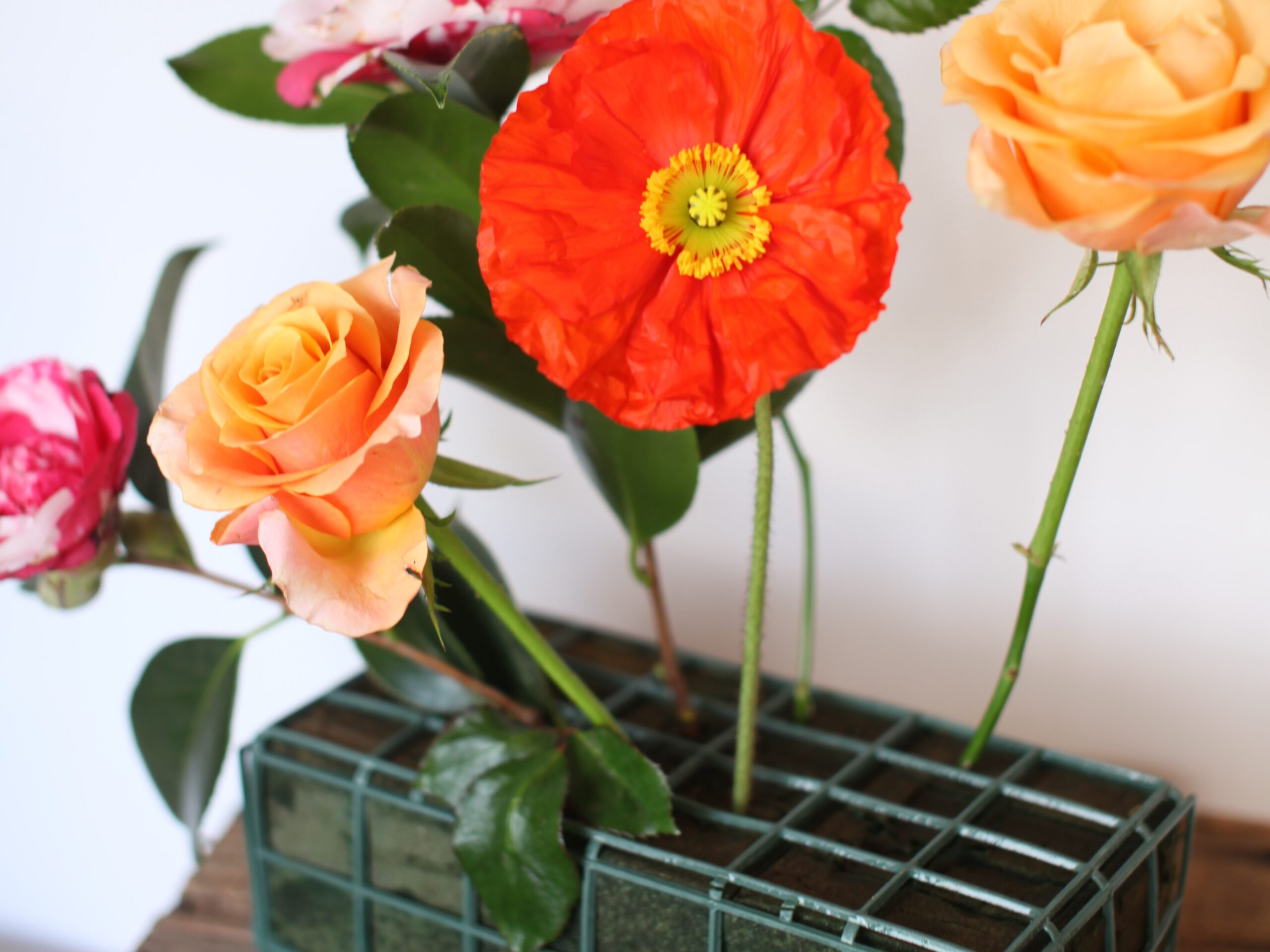
Floral foam: cheap, convenient and disposable.

Floral foam is at the base of many flower arrangements.
The #NoFloralFoam campaign
SFN director Rita Feldmann launched the industry-based #NoFloralFoam campaign in 2017. It has seen florists all over the world turn their back on the product in favour of more sustainable design practices.
At the heart of the campaign is the @nofloralfoam Instagram account. Through this platform, a global community of floral designers have shared information about alternative design techniques. Since the start of the campaign, use of the #nofloralfoam hashtag on Instagram alone has grown from 36 to over 216,000 impressions.
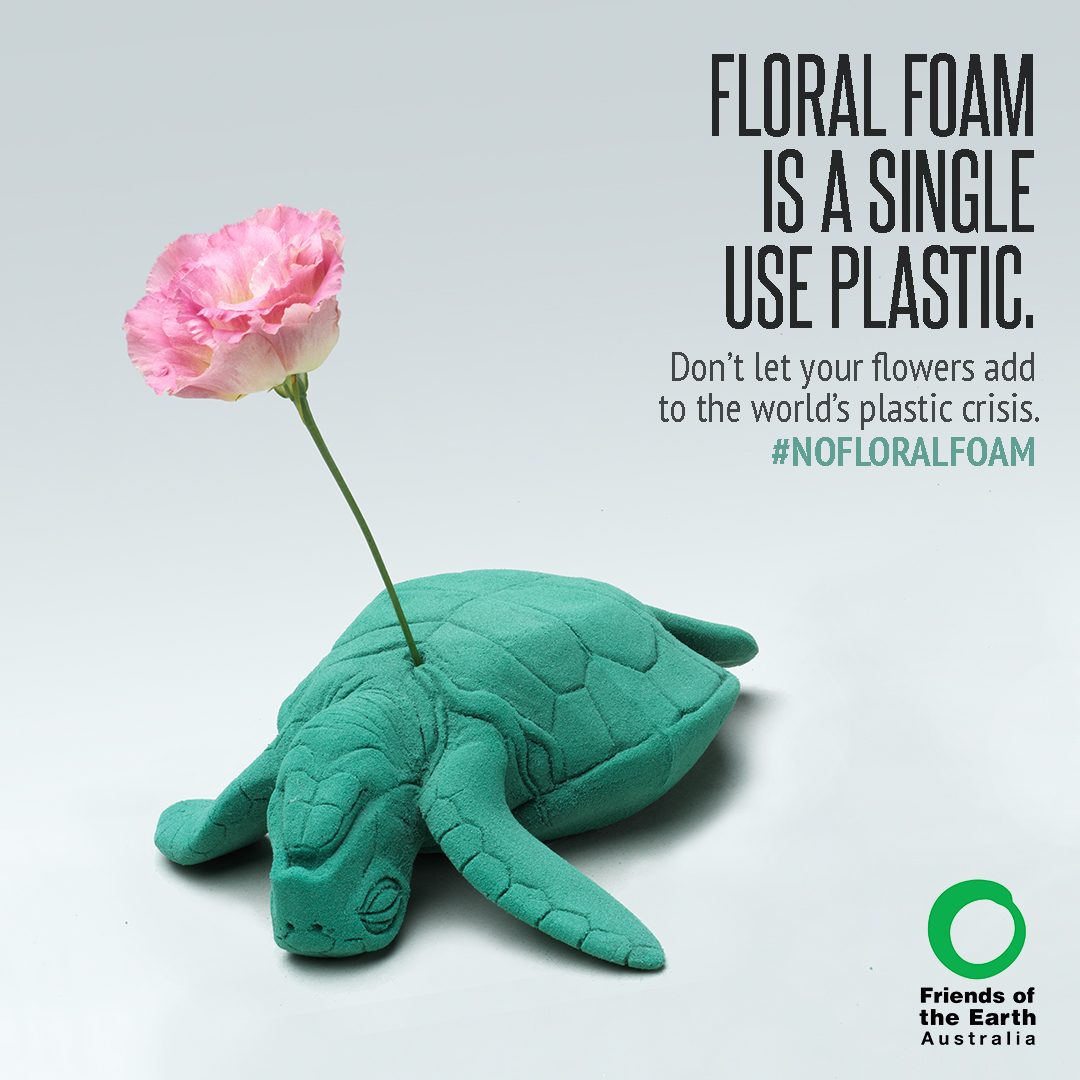
#NoFloralFoam campaign posters endorsed by Friends of the Earth Australia. Design by Sonny Adorjan

The SFN Position
The SFN’s position is that there is no place for plastic floral foam in sustainable floral design. We’re aiming to see it banished from the industry by supporting those florists who choose not to use it, lobbying regulators and educators to ban it and encouraging flower lovers to select designs without foam.
How the campaign evolved
November 2016
Not surprisingly, the campaign started with blocks of foam.
When florist Rita Feldmann was packing down at a wedding at a popular Australian venue, she noticed that venue staff had filled the green waste bin, destined for composting, with blocks of foam. This got her thinking – if there is confusion about how to dispose of foam then there must be confusion around what the product is made of.
Rita herself was confused. She knew it was plastic, but the industry-wide embrace of the product led her to believe that it must have passed some sort of ‘safety test’.
How wrong she was.

After the brief event, floral foam hangs around for hundreds if not thousands of years.

Flowers can be composted - but not if contaminated with floral foam.
Early 2017
Rita investigated, but information about floral foam was hard to come by. She finally located a 2012 copy of the US-issued Safety Data Sheet for Smithers Oasis Floral Foam, filed online with a chemical database in the United States. Not only did the Safety Data Sheet explain what it was, but the disposal advice it gave users “can be cut up and used as a soil conditioner” was in complete contradiction to widely accepted scientific approaches to managing plastic pollution.
July 2017
A visit to see Professor John West, marine botanist from the University of Melbourne set the course of scientific investigation into action. After looking at the material under a microscope, Professor West expressed his deep concern about aquatic environments being contaminated by the product, given that it was manufactured from toxic chemicals.
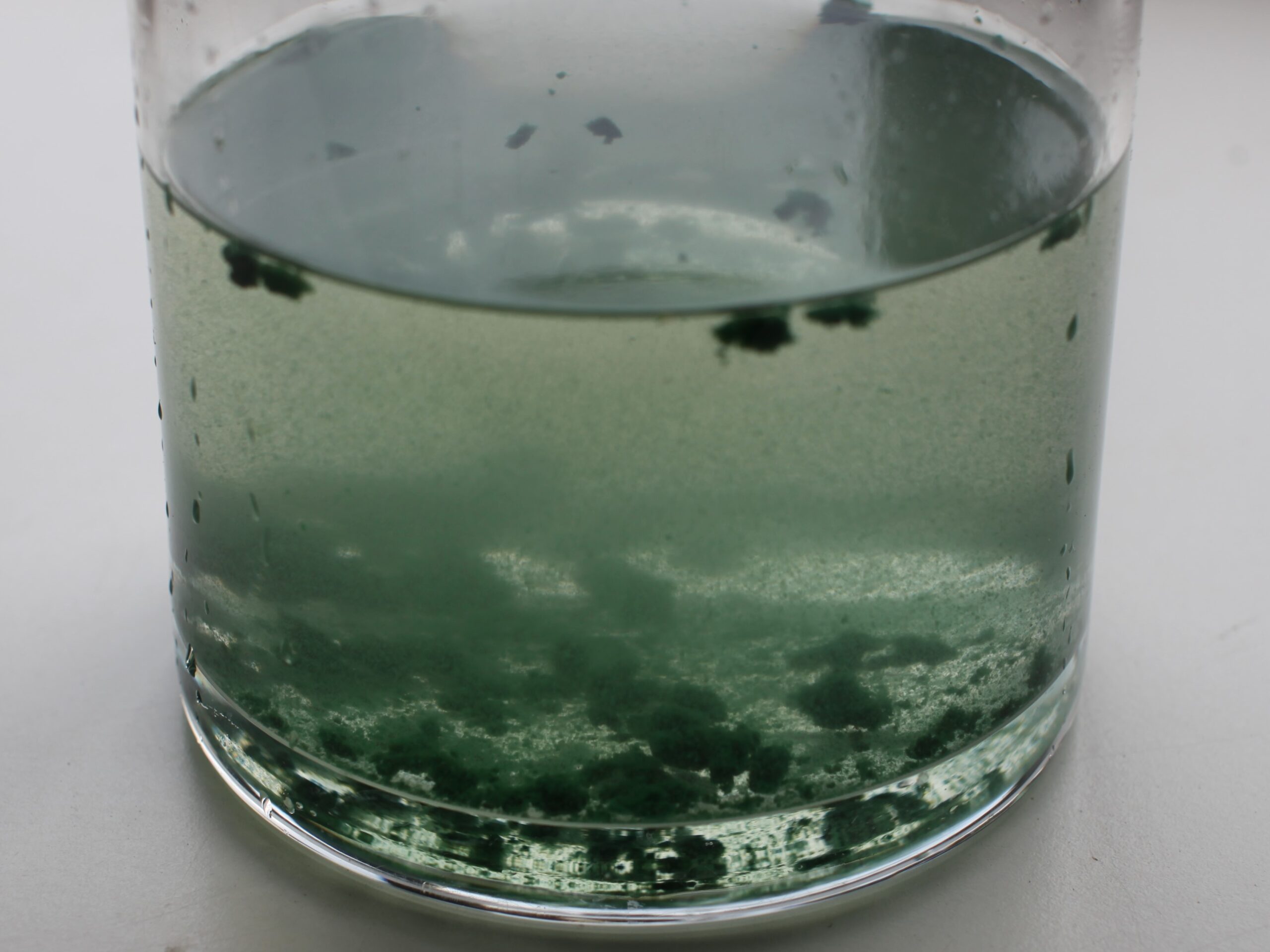
Crushed plastic floral foam in water is a familiar sight for florists and floral design recipients.

Foam microplastics under the microscope. Image: Professor John West, University of Melbourne.
September 2017
A discussion with Dr Brad Clarke from RMIT University’s School of Science led to the material being a focus of Dr Charlene Trestrail’s PhD research.
December 2017
The Instagram page @nofloralfoam is launched, and quickly attracts followers and florists keen to share the #nofloralfoam ideas and designs.
October 2018
Florist Shane Connolly hosts a ‘Sustainable Floristry’ discussion in London, with guest speaker Rita Feldmann talking about the issue of foam and microplastics. Both agreed that for too long, modern concepts of floral design had been constrained by associated sundries and products, rather than flowers. They spoke about the need for an educational resource for florists to guide the industry towards more sustainable business and design practices.
This spurred Rita to create the Sustainable Floristry Network.
December 2018
“About Floral Foam” is published online, and later republished by Flowers Magazine Australia.
December 2019
The first ever study into floral foam was published by the RMIT research team. The results showed that floral foam leaches toxic chemicals into aquatic environments – and that it is harmful for animals living in these environments.
The study also demonstrated that a product called ‘Biofoam’ – a ‘biodegradable’ floral foam produced by manufacturer Smithers Oasis – leaches more toxic chemicals than regular foam into water.
January 2020
The Royal Horticultural Society (RHS) UK bans floral foam from all events, including the Chelsea Flower Show from 2021.
December 2022
The SFN launches its revamped website, focused on education for both florists and consumers.
November 2023
The SFN’s Foundation in Sustainable Floristry course, is launched to educate florists about how bigger ideas about sustainability can be applied to floristry.

Looking at floral foam under the microscope, University of Melbourne, 2017.
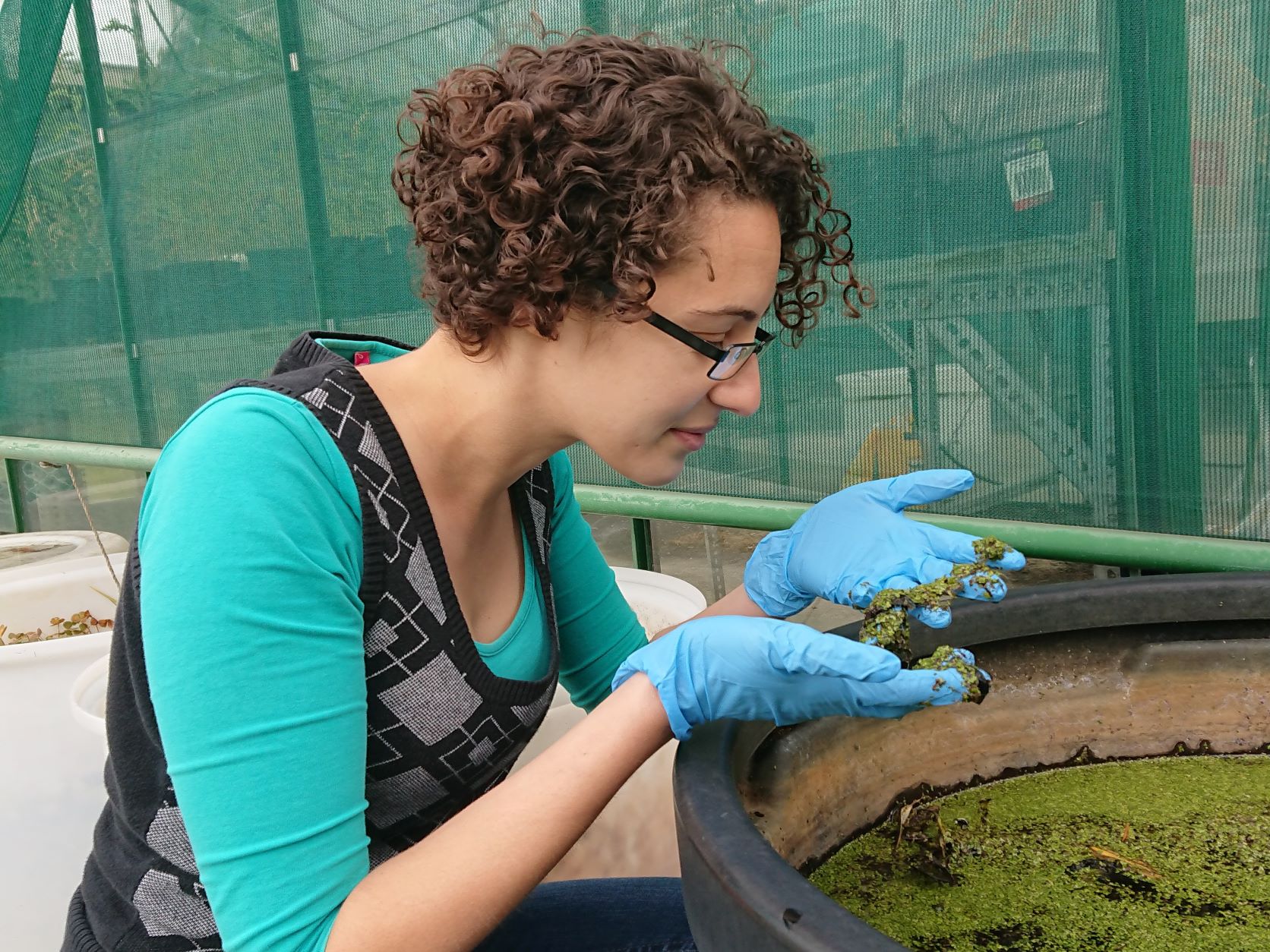
Dr Charlene Trestrail investigated the impact of floral foam on aquatic animals as part of her PhD thesis.
